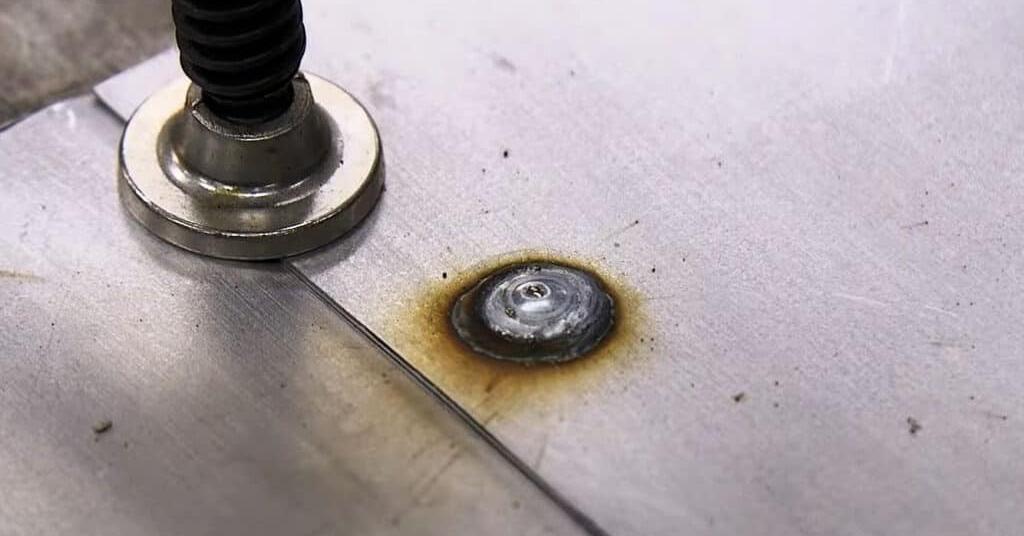Are you curious to know what is a plug weld? You have come to the right place as I am going to tell you everything about a plug weld in a very simple explanation. Without further discussion let’s begin to know what is a plug weld?
In the realm of metalworking and welding, plug welds emerge as a crucial technique, offering structural integrity and joining metal components with precision and strength. This specialized welding method plays a pivotal role in various industries, contributing to the assembly and construction of diverse structures and machinery. Let’s dive into the intricacies of plug welds, their applications, and the significance they hold in the field of metal fabrication.
What Is A Plug Weld?
- Joining Technique: A plug weld involves fusing two metal pieces together by creating a weld puddle or molten pool in a hole or “plug” made on one of the pieces, effectively bonding them together.
- Strong Fusion: By melting the edges of the hole and the adjoining metal surfaces, a plug weld creates a robust fusion between the two components, ensuring structural stability.
The Process Of Plug Welding
- Preparation: The process begins with drilling a hole in one of the metal pieces, aligning it with the area where the welding will occur, ensuring a precise fit with the adjoining piece.
- Welding Setup: The two metal pieces are then placed in position, and an arc welding process, typically using MIG (Metal Inert Gas) or TIG (Tungsten Inert Gas) welding, is employed to melt the metal around the hole, creating the weld.
Applications And Versatility
- Automotive Industry: Plug welds are widely used in vehicle manufacturing, joining sheet metal panels, frames, and structural components, ensuring structural integrity and durability.
- Metal Fabrication: In general metal fabrication, plug welds serve to secure brackets, frames, and other components, providing strong and reliable joints.
Strengths And Advantages
- Structural Integrity: Plug welds offer excellent load-bearing capacity, distributing stress evenly across the joint, contributing to the overall strength of the assembly.
- Minimal Aesthetic Impact: Due to their placement within drilled holes, plug welds often result in a clean and inconspicuous appearance, especially in finished products.
Get Information About Advantages On Mainadvantages.
Precision And Quality Control
- Quality Assurance: The accuracy of plug welds is essential, requiring precise hole alignment and proper welding techniques to ensure the integrity of the joint.
- Testing and Inspection: Quality control measures involve rigorous inspections and testing to verify the strength and integrity of plug welds, ensuring adherence to industry standards.
Conclusion:
Plug welds stand as a testament to the art and science of metalworking, providing a reliable and durable method for joining metal components in various industries. Their capacity to create strong, concealed joints while ensuring structural stability contributes significantly to the strength and integrity of assembled structures and machinery.
As an integral part of metal fabrication, plug welds exemplify the meticulous craftsmanship and engineering precision required to create robust and enduring connections in the world of metals.
FAQ
Why Is Plug Weld Used?
Plug welds are circular welds used to fasten two surfaces together through a small hole in one of the surfaces. In automotive applications, plug welds are commonly used in place of spot welds when there is insufficient space to accommodate spot welding equipment. The resulting weld is often stronger than a spot weld.
What Does A Plug Weld Look Like?
Plug welds are a round weld that is made inside of an existing hole most commonly in one piece of metal, welding that piece to another member. The plug weld symbol is a rectangle with a diameter symbol placed to the left of the symbol as well as the number associated with that diameter.
What Is The Difference Between Spot Welding And Plug Welding?
Like spot welding, plug welding fuses material by making coin-like deposits on overlapping sheet metal. However, with plug welding, the welder cuts holes into one sheet instead of using metal pins. Heat melts the metal, filling the hole and fusing the two parts.
What Are The Requirements For A Plug Weld?
The plug weld should have a bead height of no more than 3 millimeters or 1/8 inch. To determine the total weld diameter: 6 mm hole = 8-10 mm. 8 mm hole = 10-13 mm.
I Have Covered All The Following Queries And Topics In The Above Article
What Is A Plug Weld?
A Plug Or Slot Weld Is What Type Of Weld
What Is A Plug Weld Used For
What Is A Plug Weld In Welding
What Is Slot Weld
Plug Weld Joint
Plug Weld Symbol
What Is A Plug Weld
